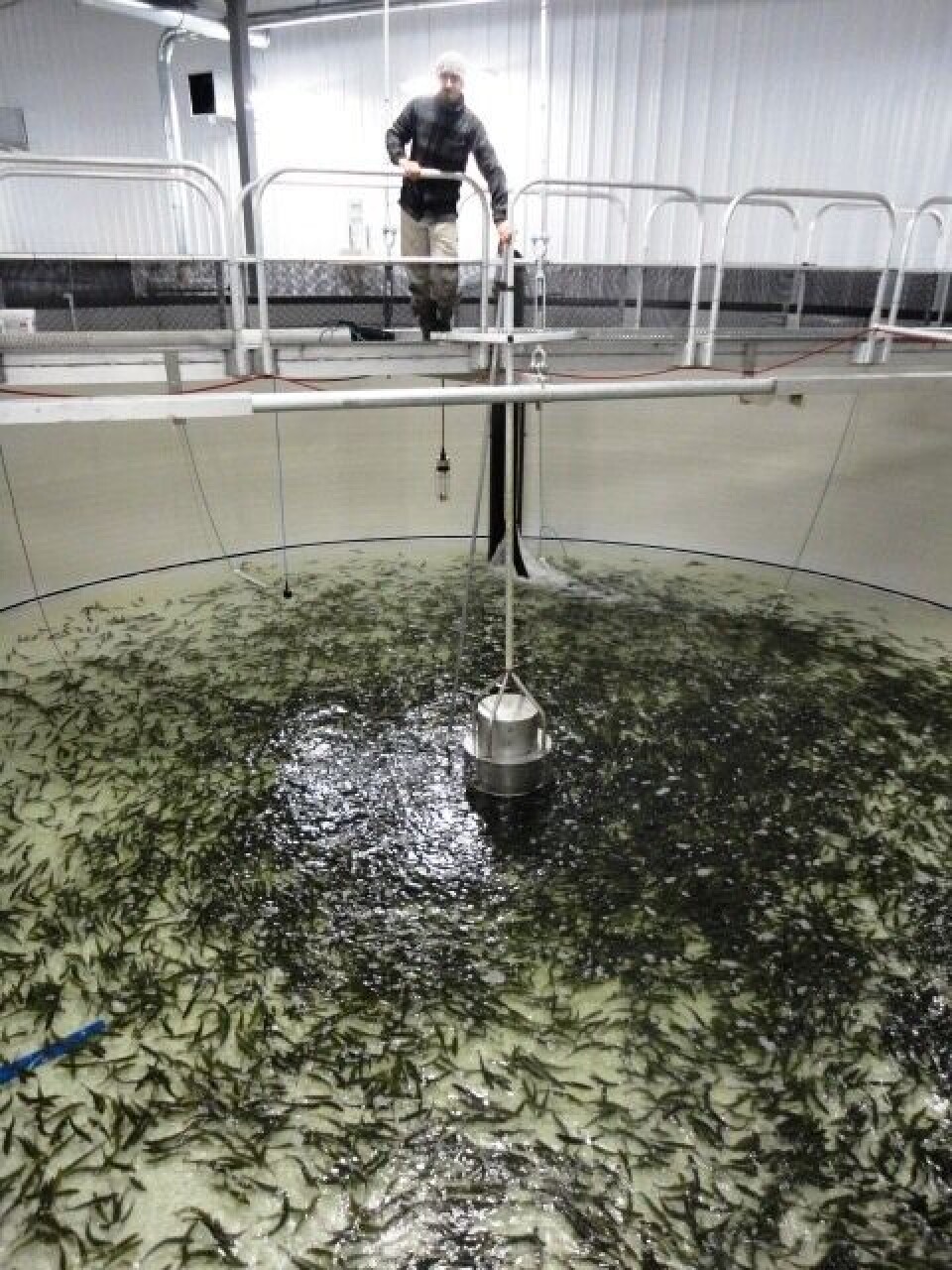
Market sized Atlantic salmon has been produced in land-based tanks for years
While the World anxiously awaits the first harvest of Atlantic salmon from the much publicized land-based tank farm facility on Northern Vancouver Island that is owned by the ‘Namgis First Nation, conventional salmon farmers in both British Columbia and Washington State have been keeping Atlantic salmon in freshwater and in recirculation aquaculture systems for many years. And as Jamie Gaskill, Production Director for Marine Harvest in B.C. explains in a recent company newsletter, the technology is evolving, but the costs are still prohibitive with respect to using this method to produce and sell seafood at a price that is acceptable to Joe Public;
This year marks Marine Harvest Canada’s tenth anniversary growing market sized Atlantic salmon (>5kg) in tanks on land. From 2004 to 2008 we grew 8kg+ broodstock in a flow-through system at our former Kokish Hatchery at Telegraph Cove and in 2009 we moved to our current facility at Fresh Water Farms (FWF) in Duncan where we grow salmon in a newly built Recirculating Aquaculture System (RAS).
The use of RAS came naturally to us since we had helped pioneer its development and have been using various generations of RAS technology to grow salmon since 1988. Application of the technology and the technology itself has advanced greatly over the past 26 years and we now rely on RAS for the majority of our smolt production (up to 800 MT / year).
Our experience with smolt RAS afforded us a great learning opportunity which made it easy to transition to broodstock culture. The Duncan facility has allowed us to push that concept and perfect the correct use of current velocity, lighting, water chemistry, and stocking density. Total annual production at FWF is 100 MT with stocking density of up to 70kg/m3 for 4kg fish and 50kg/m3 for salmon at full maturity. Our average live weight last year was 13kg . Typically we reach what would be a normal market size of 5.5kg in 15 months.
Professional salmon growers have several times analyzed the concept of growing even more fish on land for human consumption. However, at each instance we have decided against it due to cost, environmental footprint, and animal welfare concerns. If you began with an excellent and ample well water source that required little addition of dry buffers, had fairly cheap electricity, and could manage to grow your fish at densities ~90kg/m3 (six times greater than densities at sea), you may be able to produce a 5.5 kg salmon for about the same operating cost as you would at sea. The catch is capital cost, space, and ground water consumption.
A 1,000 MT land based system requires a capital investment cost of $20,000,000 (~€13.1 million) (~$20/kg produced) (~€13.1/kg) and consumes ~ 1,000,000 litres of freshwater daily. A 3000 MT typical sea cage site which can be built for ~$5,000,000 (~€3.3 million) requires little space (it is three dimensional), no freshwater, and runs almost entirely on natural tidal power. Growing food fish on land can of course be done but it does become consumptive once you scale beyond a certain size. But why make comparisons in the first place? It’s a waste of time. Professional salmon growers do not think in terms of “either/or” but instead “and”. For 26 years we have used closed system technology as one accelerator of our business and will continue to do so, but so shall we use advancements in sea cage technology. For us, in our business, it is the combination of the two that is most powerful: not one or the other.






















































